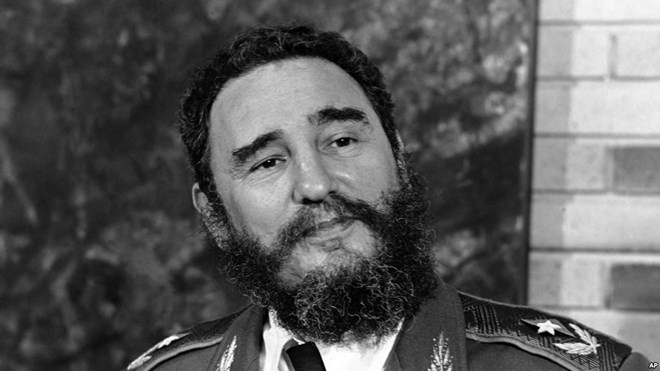
Sunday November 27, 2016

FILE - Cuba's Fidel Castro, pictured June 10, 1977.
One place besides Miami where few tears will be shed over the death of Fidel Castro is Somalia, where his military involvement left a mark.
In the mid-1970s, Castro and former Soviet leaders were celebrating what looked like the emergence of another socialist leadership following the rise of the Derg regime in Ethiopia. Somalia had already been declared a socialist state and had hosted a large presence of Soviet and Cuban military advisers and trainers.
In early 1977, Castro brought together the leaders of Somalia, Ethiopia and southern Yemen to create greater socialist federal states in the region. General Mohamed Nur Galal was the former deputy defense minister of Somalia and the focal point of Somalia's military contacts with Cuba at that time. He was present at the meeting in Aden in March 1977.
Castro's vision
"He [Castro] was representing the Soviet Union, although he did not say that at the meeting. He said Somalia and Ethiopia should join up, and said that Yemen will join up, too," Galal said.
According to Galal, Castro told them that the merger would create a strategic alliance that would control the Red Sea, Suez Canal, the Arabian Gulf and the Indian Ocean.
Castro also explained to the leaders that setting up the new alliance would bring another benefit to the region: solving the conflict between Somalia and Ethiopia over the ethnic Somali Ogaden region.
"We told him that this is about the self-determination of people, and if this federation is going to unite ethnic Somalis, we are up for it," Galal said.
The meeting ended without progress. At the time, Somalia was already in an advanced stage of a military buildup to take the Ogaden region, regarded by the Somali government as a territory "occupied" by Ethiopia.
Meeting with Barre
When Castro learned of Somalia's plans, he flew to Mogadishu and met his counterpart, dictator Mohamed Siad Barre.
After the meeting, Castro reportedly said that Barre showed him the territories that he considered part of "Greater Somalia," including northeastern Kenya, Ogaden and Djibouti, which was still under French control.
Castro reportedly described Barre as a "chauvinist … and someone who thinks he is at the summit of wisdom."
Two months after Castro's visit to Mogadishu, Somali tanks were pounding Ethiopian military defense positions.
Somali troops took over Ogaden and moved deep into Ethiopia. The Soviet Union sent military advisers and provided technical assistance to Ethiopia.
Galal said Cuba had members of its Civil Defense System in Somalia and ordered them to go to Ethiopia. Castro also sent thousands of troops to Ethiopia.
Somalis beaten back
By March 1978, Somali troops had suffered heavy defeats and were driven back to where they started the offensive.
The following month, members of the demoralized Somali military officers made a coup attempt in Mogadishu. Barre held on, but the officers who survived the purge escaped to Ethiopia to set up the armed rebels who would overthrow him 13 years later, in January 1991. Somalia has never recovered from the following state collapse.
"I read a book Castro wrote, saying he brought Somalia to its knees. ... He was a bad man who hated Somalis," Galal said.